In this Episode
- [00:39]Stephan introduces Dr. Daniel Kraft, a Stanford and Harvard trained physician-scientist and innovator. He is also the Founder of Exponential Medicine, a program that explores the convergence of technology and its potential to reshape healthcare.
- [03:17]Dr. Daniel shares how post-COVID is going to make healthcare services more efficient and productive now that they’re doing virtualized health care.
- [10:39]Collaborations like crowdsourcing, sharing of best practices, and building platforms with useful information hopefully can create a fully globalized network of medicalized learning.
- [15:10]How tools like Fitbit or Apple Watch can help people measure health behaviors at home and be more proactive in optimizing their health.
- [20:57]The concept of immunity passport and how it works.
- [26:59]Dr. Daniel elaborates on the results of herd immunity.
- [30:09]How the anti-vax movement is negatively impacting the public health system.
- [38:06]What are PCR and CRISPR and how do they work?
- [44:05]Dr. Daniel shares some prototypes from the Qualcomm Tricorder XPRIZE, a $10M global competition to incentivize the development of innovative technologies, capable of accurately diagnosing medical conditions.
- [50:30]Learn more from Dr. Daniel Kraft’s talks, writings and helpful resources at danielkraftmd.net.
Transcript
Daniel, it’s so great to have you on the show.
Great to be back with you virtually. It seems like a world ago that I saw you in January in Los Angeles. Now, the world has shifted quite a bit.
Oh, my goodness. Yes. We were at Abundance 360, which is an excellent event done by Singularity University and Peter Diamandis. It’s a highlight of my year. I don’t know what’s going to happen next January, I already signed up and paid my 15 grand. I don’t know that it’s actually going to be at the hotel. It might have to be done virtually depending on how things unfold. Do you anticipate that a lot of events into next year are going to still get canceled as well?
I think we’re going to have to see this transition or blend between virtual and real. I mean, we’ve seen this explosion of virtual conferences in the last month. I was attending the TED2020: The Prequel yesterday where they’re trying to reboot. They’ve canceled. They already moved it to July, but then canceled July and they’re going to do a weekly version. They’re trying to reinvent how Ted happens, which I see as a premiere event. ExO World Live did one last week, which is actually one where it wasn’t free and people actually paid to go for three days. Actually, amazing content.
I chair Exponential Medicine, I don’t think we’re going to be able to pull one off at the Hotel Del Coronado this November, given the uncertainties. How do we kind of make compelling virtual programs? I think it’s going to be a question. I’ve got my Oculus headset, I think we’re seeing people build virtual worlds. I think we’re learning that we can do a lot of things virtually and that’s going to change how we operate post-COVID.
Yeah. Speaking of post-COVID, I don’t want to put you on the spot here to kind of fortune tell or anything, but to you, what does post-COVID mean? Does that mean that we have a cure or we have some sort of a solution that allows us to be close together and not worry about getting each other sick? Or does post-COVID mean it’s just a new normal where seeing people wearing masks in public is just how it is? And trying to stay six feet apart from everybody is just the new normal? What’s your definition of post-COVID?
That’s a great question, I think this could be a blend, right? We’re not the beginning of the beginning, but still in the middle of the beginning phase. We’re still in sort of relative lockdown. There’s a lot of pressure to restart the economy, etc. It will have different phases and a lot of disagreement about what are the requirements to get to that component. I like to think of post-COVID, hopefully, when we have a vaccine that’s effective for most folks, and when we’re able to get back to handshakes and hugs. The timeline of that is still a lot of uncertainty. I know there are several promising vaccines and trials, lots of drugs in trials. Obviously, things that were hyped like Chloroquine by Trump and others have not lived up to the hype.
We are a society that waits to be sick before we take action. We don't practice healthcare, we practice sick care, and that should change. Click To TweetI’m sort of thinking of the post-COVID world where we’re now learning to work more virtually and developing toolsets and mindsets to collaborate. I mean, are we more efficient? It’s only 1 PM today and I’ve had like eight different Zoom, WebEx, and Skype calls. I’ve been more productive sitting here than my usual being on an airplane every week.
Let’s just take the healthcare spectrum, I think that will be different. Obviously, there’s been a rapid shift to doing virtualized care, telehealthcare. Obviously, I can now, on Skype, Zoom, or FaceTime, do a doctor-patient visit with you and it’s not being blocked by HIPAA rules which required certain search platforms in the past. Medicare is paying for virtualized calls.
I think we’re not going to go back to this pre-Covid year in terms of how some health care is delivered. A lot of folks are not going to the doctor when they should be wondering what’s happened to all the appendectomies, heart attacks, and other things that fill our emergency rooms. Hopefully, there will be some good pieces that come out of this. I think we’re seeing a lot of cartelization, how science is being done and collaboration, and we’re serving the science and the sh*t out of this, which hopefully means the lessons learned and the collaboration and interstitials will catalyze other solutions, whether it’s for global warming or cancer, etc.
If there’s a silver lining to this, even if a million folks on the planet die from the acute phases of COVID, some of the things that will come out of this will save many millions more and create a basis for a better planet, including the environment, ways we collaborate, pick up and prevent pandemics nipped in the bud rather than what’s happened in this case.
Speaking of collaboration and how we can innovate and come up with new solutions that help not just people who are suffering from COVID-19, but from other more chronic illnesses, heart disease, cancer, and so forth. What are some of the innovations that you’re seeing happen in terms of how people are collaborating, like scientists, researchers, clinicians and so forth, to fast track different kinds of medications, different kinds of technological equipment, and so forth?
I think in the health care realm, it’s not like just you make something and chip it like a kid with an app. You need to have the regulatory things get in line and the FDA has relaxed some of their requirements certainly for developing COVID-related tests, which can be good and bad. You get more tests out there, but they may have not gone through the strange elements to show that they have relatively good specificity and sensitivity.
You can’t just throw any drug out there and start getting it utilized because we can see there’s a downside. Drugs like chloroquine and chloroquine have cardiac side effects and the recent study data, as of this week and in late April, have shown that there may not have a benefit, maybe more deaths of the folks on chloroquine.
I would argue we need not just the technology, but the means to both regulate it and get it out there. I think there’s the fierce urgency of now critically around all that, the thought about shortages of ventilators and that we’ve seen an amazing amount of innovation of folks hacking together 3D printing ventilators in different parts to hopefully address that. I think hopefully past the need to have a bunch of 3D printed ventilators, but certain parts can be made that way. We’ve seen a lot of teams come together.
I would argue it’s now not just about any technology like a ventilator. We now have a shortage of, let’s say, intensive care unit doctors and nurses. There’s a lot of intensivity to maintain someone on a ventilator. I spent a lot of time during residency and fellowship tweaking vent settings. Could we create AI and machine learning algorithms to help learn what might be the optimal settings for a coronavirus patient and how do you win them? Because all those ventilators have to talk to each other and could they have sort of an AI, respiratory therapists start to play with that?
In fact, one of my friends, Godfrey Nazareth, who runs the company called X-Biomedical. They’ve been through some competitions and are rising to the top of the ventilator, it doesn’t just do ventilation, but also has some that built an AI, intensive care unit doctor mindset, which can hopefully be a learning system. If you can imagine all the ventilators in the world will be connected, we could almost create that hive mind, that way for ventilator settings. When something is learned in Italy, NewYork-Presbyterian, or Cedars-Sinai, the vent settings and the knowledge can be transmitted to other types of carriers around the world as a small example.
Yeah. There’s some interesting viral video content out there from different doctors and saying there seem to be some weird kinds of things going on in terms of protocols and things that go against the best interests of the patient. But it’s supposedly for the safety of everyone.
For example, something along the lines of they weren’t allowed to use C-PAP machines to help people who were suspected of having COVID, but they had to wait for the person to crash and then put them on a ventilator. I guess the C-PAP machine would aerosolize too much of the virus if they do have it, even though they’re suspected, but not necessarily tested and verified to have the virus, but just in case, you have to let them crash. Do you know anything about this?
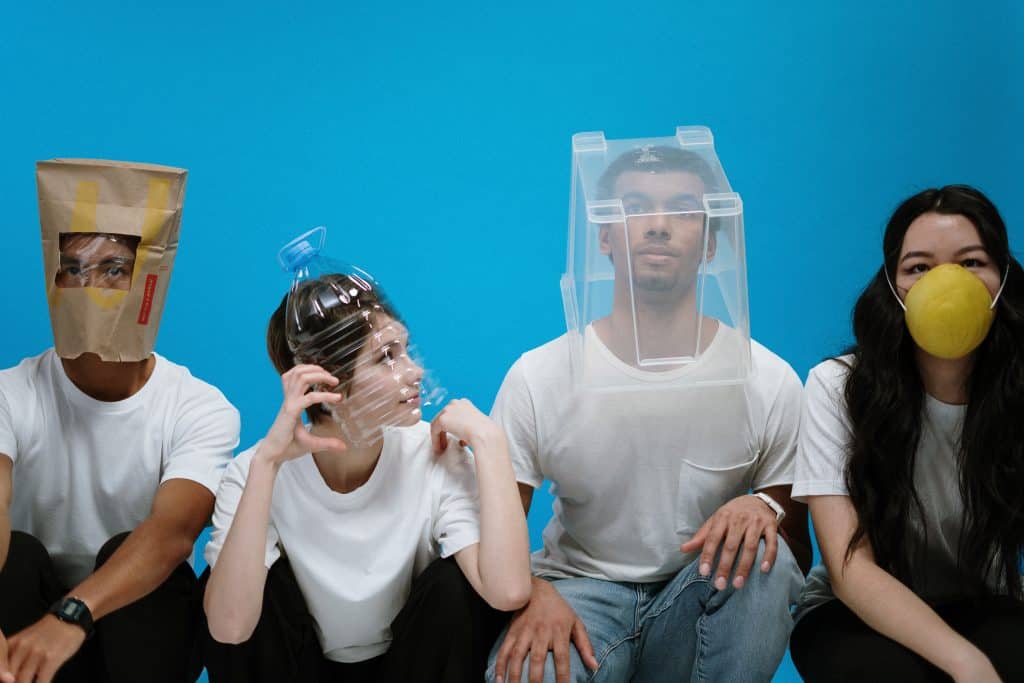
Yeah. I mean, there’s different ways of ventilating patients or providing oxygen from a nasal cannula to a facemask, to intubation, and each has pluses and minuses. Certainly, if you have an unknown patient and you put on a mask, it’s pushing a lot of air into their face like a C-PAP. It’s going to help the virus spread around that room, which requires high levels of PPE and higher levels of risk. I don’t know about waiting for patients to crash.
We’re now learning that folks act quite hypoxic. They’re able to ventilate in a sense they don’t feel as air hungry, but their oxygen saturations are quite low. Usually, when you’ve intubated somebody, they’re in extreme respiratory distress. Many folks who are being intubated are not yet at that stage. There are even tools for the prone that meet them on their belly and have them breathe. That seems to open up some of their lung architecture that might be an intermediate step and prevent people from requiring ventilators.
I think I saw a statistic from New York, one of the big New York City hospitals, 83% of patients with ventilators did not make it. How do we improve? Maybe some of those folks might have made it if we just kind of gave them a little longer runway and tried some other procedures or interventions, maybe not. Lots of unknowns here, we’re learning a lot. There are different old protocols that may not apply.
I think we need to think about, in the entire healthcare system, we have exponential months of data, but there’s a long way to go from data to knowledge and then knowledge translating to every ER doctor or Intensive Care Unit what might be best practices. I think there’s a big opportunity and a lot of catalyzation happening at this moment to help spread information informally.
Some old physician friends have built platforms where they’re crowdsourcing the best-known information. JAMA, The New England Journal, UCSF, they’re all kind of trying to share best practices and cross-fertilize. It’s a learning time, and hopefully, that will translate to better therapies for cancer, COPD, and other elements. Hopefully, we have this globalized network of medicalized learning.
All right. That sounds kind of exponential medicine, doesn’t it? We’re able to improve and make exponential leaps and advances in technology, specifically medical technology, through improved collaboration, through taking advantage of Moore’s Law and Metcalfe’s Law and all that. Maybe we could give a bit more.
I haven’t heard the word exponential used so many times in this context or others ever, and I think most folks understand exponentials, but it’s hard for our brains to still kind of get it. That’s right. Oh, there’s only one case, there were only two, only four. The first month doesn’t seem very exciting. But then by 30 days or 60 days in, and if you’re doubling cases every two days, you’re at a billion. That’s the power and challenge of exponentials. Why? My smartwatch has more computing power than my little iPhone 2, which is an antique.
The power of conversion technology can help address COVID. A small example, when you need to go from hospital to home. I call a few hospitals to home, moderating folks at home with little sensors like a little pile of tools here like intensive care, even a little patch can enable you to have a patient not have to stay in the hospital, monitor them with their heart rate. But then she put an oxygen saturation sensor and combined O2 SAT monitor for about $30–$40 online.
Is that the pulse oximeter that you’re talking about?
Yeah, pulse oximetry. There are a variety of ways to do that. The features have all these exponential blended into your own medical tricorder type device that does your temperature, does your oxygen look set, your respiratory status zero, integrate that with machine learning, AI, kind of personalized to you—your weight, your age, your co-morbidities—and can help guide you to proactive prevention, earlier diagnostics, or smarter virtualized care.
A lot of folks with Coronavirus, most don’t end up in the hospital, most do okay. We’re still debating the incidence and the mortality rates. But we can sort of leverage all of these tools because most people have an analog thermometer. If I’m your doctor or I’m an app-based doctor, you don’t want to pop up with a screen to start telling your problems. You want to hopefully spend time with the chat, but he’s already asked you all the smart questions about your age, your comorbidities, what meds you are on, your symptoms so that when you pop up on the screen, you already answered those questions, I can see those in context.
Then, potentially, you have your home-based diagnostics device, a portable, AI-based stethoscope like this one from Echo. They can listen to your heart and you can do AI-assisted diagnostics, or I can look in your ears or throat that might even have been recorded ahead of our exam so we can use that short five-minute face time component to really get to the crux of the matter and then help guide you to your next steps.
When I finish the sort of virtualized call, I’ll continue to monitor you with your patch or your Apple Watch and see what your heart rate trends are, maybe your temperature. That enables me not to have to keep checking in, but you’re not doing well like a little ping saying you’ve gone from green to yellow or cluster red. We can then bring you into the emergency room appropriately, not too early and not too late.
We are fighting a 21st century disease with 13th century technology. It's time we push through with medical innovations. Click To TweetRight. The pre-COVID sort of doctor’s appointment was waiting in the waiting room. You get exposed to all sorts of things while people were coughing and sneezing in the waiting area and then go and get seen first by the nurse who takes your temperature, your weights, your height, all those sorts of data points.
Basically, She or he is just a data collector, not giving you any assistance with anything. You wait in the waiting area for the doctor in the room that you just don’t know how long it’s going to be before the doctor shows up, and maybe it’s a half-hour or an hour sometimes. They spend as little time as they possibly can because they’re all backed up with tons of other patients.
What we’re talking about here is kind of the future with telemedicine and with all these devices that will be monitoring stuff. It’s that the nurse who’s collecting all these data points doesn’t even need to be there now, it’s just the devices are feeding right into maybe an AI, or machine learning algorithm, or something that will be able to look for abnormalities, that would be able to alert the doctor to potential issues because of comorbidities or what have you. Then, they’re just often running as soon as the telecom call happens.
The way to summarize it, in a nutshell, is that we don’t practice health care, we practice sick care. Sick care models are based on very small amounts of intermittent data. That could be your temperature, your blood pressure, your blood work, your EKG. Usually, that only happens when you visit your doctor, hopefully for your annual physical or if you’re in the ER or intensive care unit. The data’s intermittent so we only react to that late. We have reactive sick care.
Intermittent data, these are reactive. You wait for the patient to show up with a heart attack or stroke, late-stage cancer, or infection. Potentially, a lot of these tools, from something as simple as your Fitbit or Apple Watch to the Internet of Things, increasingly measuring our health and behaviors in our homes and beyond is to be much more proactive. Start with more continuous data that can come from all sorts of sources. That could be obviously your base information, your height, your weight, your sex, your medical record, what drugs you’re on, but your genome, your microbiome, your digitome.
As we learn more about what that data feeds, your digital exhaust looks like, we can be much more proactive, hopefully, optimize your health to pick up that disease early. Whether that’s something like cardiovascular disease, maybe your sleep patterns are changing, your resting heart rate went up 10 points, or even there’s no evidence now that you’re fit better, your Apple Watch can pick up the flu or or potentially Coronavirus by changes in your respiratory rate and movement in sleep and something pick up the temperature and some are going to add in pulse oximetry.
No doctor or even the patient wants to be looking at all these data feeds making sense to be synthesized. Let the check engine light in your car, take 300–400 different sensors, and hopefully give you early warning even without knowledge of a detail that you need to take your car into the mechanic to fix the piston number 3. That’s sort of where healthcare is going to go, and that relates to managing infectious diseases as well as the non-communicable diseases which create and cause most of the mortality and morbidity around the planet.
Now, I’ve been reading a bit about how the virus can show up in stools and in the feces. Having the microbiome and the gut health being monitored as well I think would be an important aspect of this. Is that part of the digitome of what’s being monitored and fed into an AI and used for telemedicine?
I can start simple, just taking Coronavirus (COVID-19). The early signs we heard about were dry cough and fever, the classic mutation. But it turns out a good percentage of patients may have just had GI symptoms, for example, diarrhea and fever. Some had predominantly that and not the dry cough, and maybe that later progressed. You don’t need to have PCR analysis of your stool, but it is one of those examples of learnings.
My friend, Brennan Spiegel is a gastroenterologist at Cedars-Sinai and his colleagues at the Department of Gastroenterology have been collating that information, how do you distribute that. Yes, you could theoretically be testing your stool, the go-to spot for doing diagnostics.
But, as we learn how this virus works differently in different people, we’ll need different sorts of diagnostic paths. Hopefully, we’ll have home-based versions that can do the acute virals, which usually uses PCR, CRISPR, and other technologies being looked at as a way of maybe doing very rapid detection of the actual virus. A lot of the other testing is going to be from your immune response, your IgM, and your IgGs, circulating antibodies which are responsive.
A lot of the talk about recovery can appear to be back to normal is being a test, you, me, or folks who may not even know they were exposed. Hopefully, we have signs that we have an immune response and that will convey protection to future potential infections. We do know that Coronavirus is mutating, we do know that in many other viruses like influenza, that changes year to year enough so we can have vaccinations. There’s still a lot of uncertainty about our immune responses and who’s going to be protected and for how long and what are the implications in vaccines and getting back to work.
All right. If folks can get the disease multiple times, and the antibodies that they get from the first exposure and first sickness of COVID-19 doesn’t provide enough immunity to last and they end up getting it again, let’s say, a year later, that throws a real wrench in the works in terms of also getting back to work, and the economy getting restarted up. Is that right?
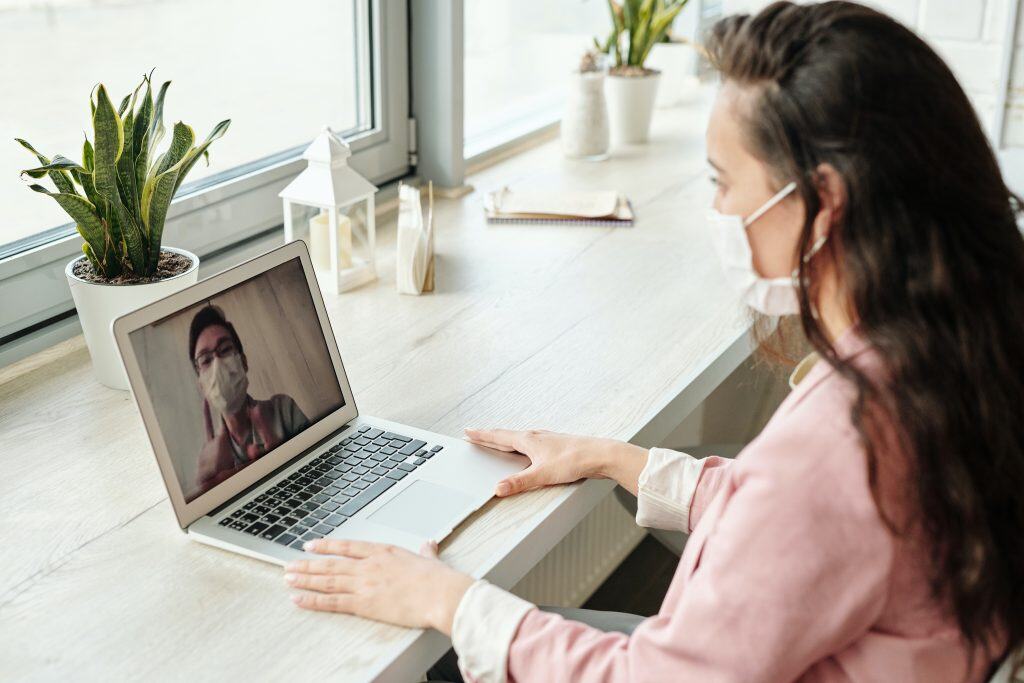
It could. I mean, there’s several types of vaccines being developed. Some are DNA vaccines, some are RNA vaccines, some are classic S protein; make a bunch of that and inject that as the antigen. Even for influenza, there are several groups working on a universal influenza vaccine which will hopefully not require us to take an annual flu shot, which is still a bit of a gas each year. Some years it works better than others.
All immunologists and vaccinologists are going to be learning quickly. I mean, there’s several already in clinical trials. China is even reporting success with one vaccine. I want to be clear that just because you have a test vaccine in clinical trials does not mean you can speed up that, often nine months or year or more process having a safe and effective vaccine. There’ve been examples with, for example, vaccines developed for dengue fever, and I think even SARS and MERS that in some cases would up-regulate the immune system and maybe will have worse reactions to a slightly different strain of dengue or SARS.
There’s still a lot to learn. We don’t want a vaccine to let’s say, for example, 1% of patients who take the vaccine have a very significant negative side effect when we know that the average mortality rate of Coronavirus may be less than 1%. There’s lots of tradeoffs here.
Right. I’ve heard this term I’d never heard before the pandemic called an immunity passport, where once you have antibodies, you would be allowed access to go back to work and to go about your business. But until then, you’re under a much more stringent lockdown set of criteria. Could you elaborate a bit on this if you’re familiar with that concept of an immunity passport?
I think the basics are—and this opens up a whole conversation around privacy and access—is that, let’s say, I had a case of Coronavirus, whether I knew it or not, I’ve been tested and it shows I’m positive and that positivity seems to refer to I won’t get infected again. I know that I have a special digital code on my phone that I carry with me or through facial recognition, that means, boy, I’m able to go into the Walmart without a mask or I can go back to certain workplaces or fly on planes.
If you don’t have that immunity passport, meaning that you’ve either been exposed and had the disease and have a positive title, or maybe that you’ve had the DNA vaccine and are protected. Just like we don’t let kids start kindergarten before they’ve had their measles, mumps, and rubella in any parts of the country, that you have a more formal digital immunity passport through vaccines or through having a disease. That then is a gatekeeper for what access you get to certain locations and activities, which will mean different things.
When we have vaccines, who is going to get them first? Who gets their immunity first? Who do we prioritize? Is it based on economics? There are lots of social disparities that are coming to light. Not that we didn’t have social disparities in the United States and other parts of the world, but now they’re even highlighted by the fact that folks who already didn’t have good access to regular medical care, had a high incidence of diabetes and obesity, were living in food deserts, didn’t have regular access to care. All those are being highlighted in the mortality morbidity rates here. Immunity passport, if the immunity card plays out, maybe one of the tools we get back to work, but there’s going to be a lot of ethical and other challenges as we move forward.
Yeah. There are human rights implications here. Yeah, for sure.
I’m curious about this concept I’ve recently read about called Suppress and Lift. Meaning that we’re going to be under tight lockdowns, no schools, all that sort of stuff. Temporarily, those restrictions will be lifted and then it will kind of get out of hand with the hospitalizations and all that, they’ll have to suppress again, and there’ll be an ebb and flow just to keep the health care system from being overwhelmed.
It sounds to me like there’s still going to be a lot of deaths from this suppress and lift regimen or procedure. It just seems to be pushing out the deaths a little bit. I don’t know. What’s your take on this?
If we all want to collectively survive, we need to have new mindsets for how we view healthcare. Click To TweetI’m here in Northern California, our local, county and state folks put us into a shelter in place earlier than other parts of the country. Every day that that was done earlier, arguably saved thousands of lives. Right now, UCSF, Stanford, those hospitals are not overwhelmed at all. New York City, a very different story. We’re seeing other states, other areas, Detroit and others and places, I can’t believe it, Georgia opening up bowling alleys, for God’s sake, that is going to end up with higher peaks and more deaths.
There’s going to be a bit of this dance of how do we bring down the curve as well as get back to some level of normal activity, and there may be ebbs and flows. The challenge is kind of like, “Kid, just do it one zip code at a time.” It’s like if you’re in a swimming pool and someone pees in one corner, that pee is going to actually go everywhere, it’s not hyper localized. People travel, people move.
I think we need to look at the data as it comes out and not rush some. Oh, May 1st, that’s the date. We should look at the data and adapt because we’re all learning this is a novel Coronavirus and the way it’s behaving and how our society and our governmental officials from state to state is highly variable, which leads to very different needs and responses.
I don’t know if you were following what happened in Sweden, but they refused to or chose not to require people to shelter in place. They asked that folks just exhibit common sense. Of course, that didn’t work so well. Now, the death rate is much higher in Sweden than any of its neighboring countries. They probably need to lockdown. I’m just floored by the stupidity and lack of foresight by the government or the powers that be in Sweden. Are you following or have you followed what was happening in Sweden?
A little bit. You have just like any scientific or public health community, different perspectives on what might be best. They thought well, let’s get to maybe herd immunity and some form and that will level us off. You could argue unlock and return to work earlier on the behest of our economy, but arguably if we do it too early, that’s going to have much deeper and darker impacts on our economy if more deaths occur.
I think we learned from the Sweden experiment that may not have been the best path. We’ll still have to see what happens in their recurrence rates if they do have some sort of benefit from what folks have been exposed to. I have to look at the data in detail. We’re also learning interesting elements, again, different parts of Europe versus the US. Interesting data out of New York City looking at the subway lines, and even certain subway lines and how that might have propagated disease. People always go through turnstiles at close quarters, you get lost track, some hot spots of disease based on a few lines. The study that’s not yet been peer-reviewed has some debate about its methods but we need to adapt. Sweden may be very different from rural Oklahoma.
You mentioned herd immunity. Could you go into a little bit of detail on what that means? I know that there is an equation that takes the R number and you subtract one from that, and then you divide it by the R number or something like that. Basically, all I remember is the final output of that equation was 54% or 55%, something along those lines, meaning that around 55% of the population would need to be immune for herd immunity of the entire population. That was my understanding, a very limited understanding of herd immunity. Could you elaborate a bit more so our listeners can understand this?
The basic thing I think is outlined. Immunity can come from having the infection or having been vaccinated against it. Once a certain percentage are relatively immune, let’s say, against measles, as a classic example. If 90% of the kids have measles, even if one kid comes in with it, it’s not going to start propagating from kid to kid because most of them are already protected. The herd is protecting their propagation. If only 1% of the population has been vaccinated or had the disease, it’s going to spread more like wildfire. Our zero will go from less than one to three or four, and the folks who get it will be much higher.
That’s why even if we don’t just have a pandemic, we have an infodemic. We’ve had infodemic around vaccines in general with folks, the anti-vaxxers and the result of that has been deadly. Kids are dying now in measles, a disease that we had a vaccine for decades because some parents did not vaccinate their kids. This lowers our herd immunity and exposes many folks, including kids who can’t get vaccinated because they may have had childhood cancers, etc, at much higher risk.
Lots of dynamics here in the vaccine world, the anti-vaxxers, the probe actress. I think public health, the reason we’ve gone from an average lifespan of 40s, or 50s, 1900s to 70+ is because of vaccines primarily. There’s a lot of fear-mongering and misinformation. There’s a lot of misinformation in this pandemic about still calling it a hoax in some circles and pushing alternative views that could end up being severely damaging to lives and to the economy.
Let’s go into this a little bit about vaccines, anti-vaxxers, and some of the myths and misinformation out there in terms of vaccines in particular for ones that might be coming out to deal with COVID-19. Could you share a bit more about that?
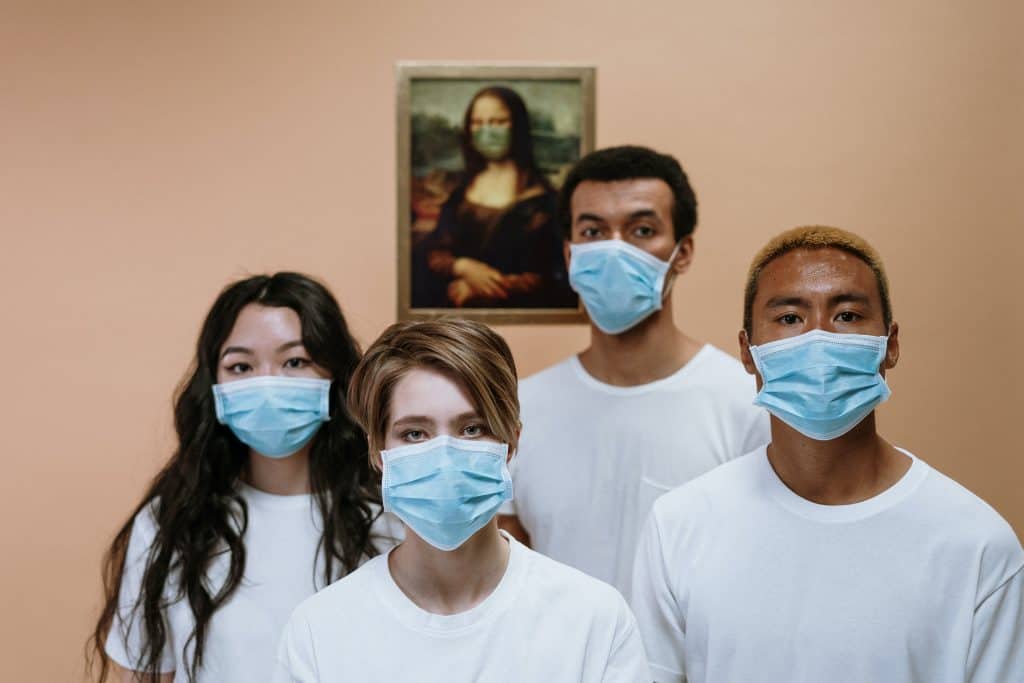
I think as long as you’re a celebrity and you’ve been on TV, you have the right to now become a spokesperson for the anti-vax movement, often based on people who publish studies that have been completely discredited for a variety of reasons. Some have because they have a child with autism and they’re looking for some sort of excuse and they go, “Oh, look, it was their measles vaccine,” which again, to be very clear, there’s no actually valid demonstration that vaccines cause autism. But a lot of folks for valid and invalid reasons get on that bandwagon and start propagating that. That ends up impacting our public health system and arguably, many more kids will die from measles.
There’s no vaccine, no drug, no therapy, no risk. It’s always a risk-benefit ratio. I’ve been quite disheartened looking at the anti-vax movement over the last couple of years. Arguably, that movement is negatively impacting what’s happening here as well. The whole sort of discounting of science, whether it’s for global warming or actual rational science, the setting a pandemic has dramatically hurt the United States, the number one sort of superpower spends the most money per capita for health care, has number one in our ability not to get tests out there, number one in the number of cases and deaths per capita.
We need to look at the mirror, and hopefully, hold our elected officials, some of whom are not elected by the popular vote, to account for listening to our scientists and not through the lens of politics. Probably enough.
Yeah, thank you.
My understanding of some of the previous pandemics, like the Spanish flu, MERS, and SARS, which I don’t know if those were officially pandemics or just epidemics, but there’s a second wave that happens in terms of these outbreaks. The second wave can be more deadly, whereas the first wave can be more infectious. I recall the graphs looking bigger for the second wave over the first wave. I’m curious what your thoughts are on that next wave that’ll hit potentially when we let people start going back to work and sit in the retail shops and all that.
Yeah, I think there’s been a lot of look back now to 102 years ago, the 1918 Spanish flu. What cities, for example, if Philadelphia had its parade for St. Patrick’s Day and others had stopped it. They had much higher levels if they had the parade than not. Then also, who maintained smarter wearing masks and public health elements that lowered their second wave because people may not recall, but in the Spanish flu, it went around the world several times and came back and killed many people in 1919 and even early 1920.
I think it means that we’re not going to go back to life as normal, least for the short term. Maybe once we’re moving back, we still may be maintaining social distancing or physical distancing, as it should be called. We may be wearing masks for much longer, our social norms, and how we get together are going to change. We’ll hopefully learn quickly what measures are impactful, that is lowering the subsequent waves, and implementing them smartly, and learning from other nations. Singapore, they went down to zero cases, and now new cases are coming from other parts of the world. We will, again, have a real-time radar and real-time Rapid Response.
Is that common for the mortality rate, for the second wave to be higher? Is that something that people are expecting to happen with the second wave of COVID-19?
Not being an epidemiologist and public health peer expert, I don’t know the answer to that. I think what we need is to be eyes wide open and not assume that once things have gone down, that they’re not going to pop back up because it’s pretty obvious that many places they will, particularly folks locations, i.e. Georgia, where they’re relaxing things way too early or opening up salons and bowling alleys first. There’s going to be certain elements we can get to work in smart ways and hopefully at a staged manner, not just let’s open the floodgates and I’ll go back to Mardi Gras.
Yeah, right. It seems really stupid to have big, public venues that are unnecessary, like bowling alleys be the first open. That just seems ludicrous to me.
The bowling alley lobby is strong there in Georgia.
Apparently. Oh, my goodness. Let’s get back to the detection of different data points from home. Is there a glucose monitoring or detection that’s non-invasive? It doesn’t require a finger prick or a blood draw. Maybe it’s based on just light, sensors, and detecting what’s happening with your capillaries or something.
For almost any sort of come in lab tests, you want to become non-invasive and home-based. There’s a sensor on the market now, you place it into your smartphone and it can do blood sugar, for example. Right now, those are all basically blood-based tests. There have been billions of dollars spent on trying to create noninvasive light-based sensors for blood sugar. Some work, but they only work when you’re not sweaty, if you are the right shade of skin. I don’t think anything is yet to come to market but a lot of folks are very interested in that.
Right now, there are relatively non-invasive subcutaneous real-time blood sugar sensors that then you can connect back to an insulin pump to the artificial pancreas model. But right now, there’s no magical pulse oximeter type light that would detect your blood sugar accurately. A lot of folks are working on it. I haven’t seen one yet that looks like it’s close to market. But other common things can be measured in interesting ways—blood pressure, hypertension. About one in three adult Americans has hypertension, less than half of it well-controlled.
High blood pressure is the leading cause of early death and rapidity around the planet. The classic thing is to put a cuff on and squeeze your arm. If you’re lucky, once or twice a day at home, it’s that connected blood pressure cuff. That data still doesn’t shut down to your doctor in most cases, but you might record on your app or your smartphone.
Leave the cure to the medical experts. For those who don't belong to that group, your role is to stay home to save lives. Click To TweetNow, there are several groups that have worked on non-invasive forms, almost like a radar system. Some devices, the medical tricorders are emerging that can sort of calculate one that is accurate. They’re pretty good at the normal range, but not when you get super high or super low. But an Israeli company called Bio Beats got FDA clearance in about September of last year for a patch-based, one-o- one that can be based on a phone that seems like it correlates very well to regular blood pressure cuffs. That will be a gamechanger for hypertension. If you’re running high or low because you don’t feel hypertension, most of the cases, you can be much more proactive adjusting your medications, lowering, or changing the doses as you go. That’s another sample, something getting less invasive.
You can use your smartphone camera to look at the back of your eyeball. That seems to be what measures everything from your risk for hybrid stroke or heart attack to many other AI and big data machine learning types diagnostics. It can tell whether you’re male or female, your BMI, and other risk factors. I think this future health care is having a whole set of new ways to measure our physiology or behaviors. Voice can be a biomarker. If you’ve got a cold or even the flu, your voice is different. If you’re depressed or you’re manic, your voice changes. Similar groups have now developed a sort of algorithm to use voice biomarkers.
I pitched this idea a while ago. Could you have an AI cough detector? Listen to your cough, whether you have a common cold, whether you have croup or remember your kids when they have a croupy cough, feels like you’re barking. Different sounds of different coughs can now be picked up by your microphone on your phone. There are a couple of groups now trying to develop like a cough COVID. What’s the cough? That sounds like a Coronavirus cough. What does a cough sound like when someone’s really getting worse and might need to go to a hospital? Lots of new ways of picking up our physiology going forward.
Yeah. It’s amazing, it’s exciting where we’re heading and getting to that point where what Peter Diamandis refers to as a longevity escape velocity, I think is the terminology he uses for that.
That’s a bit different. That’s the idea that every year you live here longer. New technologies will come into play that for every year you live, extend your lifespan by a year and a half or a year and a quarter so that if you live long enough, 30 years, 10 years from now, we’ll have CRISPR based xenotransplants from humanized pigs. If you need a heart, liver, a kidney, you can get one from a pig, might not be kosher but you’ll take it.
Maybe 10 years from now, we’ll have that universal flu vaccine or vaccines that prevent Alzheimer’s from developing, which again, cancer, Alzheimer’s, heart disease, all leading causes of earlier death. It’s not about this lifespan, I don’t think anyone wants to be 120 and feel 120. It’s about healthspan. How do you live to 100 and make 100 the new 60? You’re still mobile, thinking, drinking, moving, and able to contribute to society in some form rather than sitting in a wheelchair and living longer.
Yeah, great point. You mentioned CRISPR and earlier in our conversation you mentioned PCR. Polymerase Chain Reaction is what PCR stands for but I wouldn’t assume that our listeners know what PCR or what CRISPR are. If you could elaborate a bit about those two things, I’d be great.
PCR, polymerase chain reaction, is by a Nobel laureate who’s surfing at the time, I think he made a claim that he was on a mind-altering substance when it came with the idea. The basic idea is that you’re trying to make a diagnosis or pick up a virus, RNA, or DNA, it’s a pretty small amount of material.
What PCR enables you to do is able to amplify that. You have a string of the virus RNA. You’ve now synthesized a bit of code ACT and genes that match that string of RNA or DNA and you put that into basically a heating system that can catalyze those to bind and then to amplify. Using the right polymerase magic of recombinant biology, have those double and double on an exponential.
You start with a very small amount of RNA or DNA. After several cycles, you have officially milligrams or even grams and that enables you to take a very small signal and amplify it. Which is why it takes time to do some of these viral diagnostics for Coronavirus or other elements. It’s now being used to amplify small amounts of DNA in the circulating blood, maybe pick up cancers early. Companies like Grail or Gardens have them work in that capacity. That’s PCR and that’s been very powerful.
One thing about this that I think is an important point is if you’re massively amplifying a tiny amount of, let’s say, the Coronavirus RNA, you could get a signal that says you got it when your immune system totally had it under control. There was just this tiny exposure and it’s been obliterated a few hours or a few days later and yet it shows up as, “Hey, you’ve got it.”
Possibly, I think we’re going to learn there’s the cynical viral load, right? Meaning you might have just a small amount and it determines if you got sneezed directly in the face or cough. That’s why many health care workers, young healthy ones are getting sicker and some are dying at much higher lows, which helped the virus take hold and amplify quicker.
And because of the exponential nature of the growth of the virus.
You start with a higher starting dose. You can have a more rapid clinical course potentially. We’re still learning that. Maybe folks who get the flu today, if you pick it up early, you can take Tamiflu, which is an antiretroviral, and your course of the common flu will be one or two days shorter. It doesn’t cure you right away but it shortens the course. We may learn for Coronavirus that we can test candidate people early when they’re relatively asymptomatic. They take the equivalent of an antiretroviral like Remdisivir, which is showing promise by a company called Gilead which is being used for very sick patients. Might be something you take relatively asymptomatic or where you recognize that while you get none of the risk factors, it means you’re going to go forward. Let you have a light course of coronavirus. Your immune system is going to respond. You’ll be protected in the future.
I think we’ll have different stages. How you treat someone when they’re asymptomatic, where they’re early symptomatic, where they’re just sort of staying at home, kind of like a bad flu. Folks are in the hospital because their oxygen levels are low and the folks who are in the intensive care unit intubated might need different types of drugs and interventions. It may be like, for HIV, a cocktail of drugs. Coronavirus can mutate just like HIV does. If you just treat with one drug or one antibiotic, we’ve learned classically that mutations evolve, which lead to resistance.
Interesting. I interrupted you, you were going to then talk about CRISPR and what that is.
CRISPR is a revolutionary technology invented at Berkeley and also some claims at MIT like eight or nine years ago. It’s the ability to find a great targeted region of the genetic code and to swap out a particular gene. It was discovered based on what certain bacteria can do normally. Now, it’s been engineered and enables us to target a particular base region and potentially to swap it out and fix it. A classic example might be a disease like sickle cell, which is a disease where folks don’t make normal red blood cells based on one sort of bad coding, one base pair mutation in the gene for hemoglobin. That can be identified in most sickle cell patients.
Innovation happens when you bring people together from different worlds, cultures, and points of view. Click To TweetNow, clinical trials have gotten in the way of taking out the bone marrow stem cells that eventually helped make your red cells, fix that one gene, and put those bone marrow stem cells back in the patient. We populate them now with these modified hematopoietic or blood-forming stem cells. Now, we’re seeing basically cures of sickle cell patients, very promising. That’s going to apply to other diseases. Sickle cell, thalassemia, those are what we know there’s a single gene responsible, some forms of cystic fibrosis. Other diseases like many cancers. But actually, your logic disorders and diabetes are multifactorial, many genes. It’s not going to be always if we can just use genetic-based approaches.
CRISPR has been used again in early stages for discovery and petition, but curing diseases. There are some groups that are looking at one called Mammoth Biosciences co-founded by Jennifer Doudna, one of the discoverers of CRISPR to use CRISPR in a way of doing diagnostics. You may be looking at a cell from a cheek swab or whatever, see that’s been infected by vegan splice out it, amplify that signal in some way so that you can have results at home as easy as a urine dipstick for pregnancy. When that line shows up, you could take a picture in your smartphone and have it tagged you as positive or negative. Early days, it’s not an approved test yet, but an example of the innovation and thought going into you, purchase for diagnostics per COVID.
Really exciting. You mentioned earlier this idea of a medical tricorder, which is actually now a reality. It’s not just from Star Trek and now there’s, I guess, a winner to the XPrize medical tricorder competition. What is available and what’s coming in terms of medical tricorders that have all these kinds of diagnosing capabilities in the palm of your hand?
Yeah. 10 years ago, I came up with the idea at XPRIZE. We had a vision hearing around a prize called initially the OnStar for the Body that turned into this medical tricorder XPrize, a $10 million prize sponsored by Qualcomm, and several groups and companies competed in that. The winners were out about two or three years ago and now they’re trying to commercialize their solutions. But essentially, this is a prototype in one of the competing companies. The idea that you get multiple sensors and one device or built on your smartphone.
Right now, I’ve got a scatter device in front of me, devices like the AliveCor EKG, where you can do a two-lead EKG, but this will do a six lead. This is a device you can buy at Amazon, go to AliveCor, or the cardiac diagnostic. You may have a diagnostic that might be a patch that is worn over time. Deliver your vital signs on your Apple Watch now, there’s a lot of tricorder activity. You can pick up heart rate, heart rate variability, I can do an EKG on that as well.
There’s an idea we can simplify and synthesize the ability to pull different data sets in, it could be your EKG, your temperature. There are devices that could do breath, breathalyzers, and our idea of a breathometer. Look at your breath as a biomarker that can take the synthesis of that data and enable you to do early triage and early diagnosis. Again, it’s not just about the data, it’s how you put it together. How you potentially use AI or IA or intelligence augmentation to make sense of that. That will be done on your phone and give you that early ping. Others might be done in conjunction with your clinician and healthcare.
Now there’s even a portable ultrasound device, a $2000 device on the market called Butterfly IQ that has some AI algorithm that’s built-in as well. Even you can be looking at your heart, kidneys, and other elements. With AI machine learning, it will help you guide where the probe goes and also help guide the reading of that.
A good example might be using that to democratize access in a rural village in Rwanda. A nurse or midwife can see her pregnant patients. See if the baby is breech. Is there something going on? They don’t need to be going to a big hospital, they can get that done at the point of care, then help guide a healthier pregnancy and baby delivery. That is a small example. Where those same devices are now being used in patients with Coronavirus in the emergency room. You can now look at their lungs, not just with an X-ray or an expensive, time-consuming CT scan or MRI machine.
You can look at the fluid in their lungs and pneumonia through a portable ultrasound. Those are now being utilized and new protocols were being developed and spread. That’s another example. That’s not a tricorder, but that’s got a lot of components. It can look inside your body and with all the other sensors and data coming together, then you can start to move the needle for point of care triage at home, or in the emergency room, or beyond.
What I’m seeing from my experience is a lot of these tools that are just consumer devices like my Withings smart scale are subtle data silos. I guess maybe they’re now starting to sync up with the Apple Health apps so that’s all being put in one place by Apple. The smart scale would collect, I use it most days. It collects my weight, my body fat percentage, it checks my heart rates and checks the CO2 level. I think that’s about it, the chart scale temp.
I don’t know if it scales your CO2 level.
Not my CO2 level, but of the room or of the environment. Because it’s just showing me a CO2 level, I don’t know if it’s getting it from a sensor or if it’s getting it from the internet just for my location, for the city I’m in. I don’t know.
It should have been, it’s probably your bathroom. The privity example that you got that data is probably sitting on your smartphone app, even in your health kit data.
You’re a quantified self where you can track your steps and your sleep and your sleep score, your stats and your weight and chart that all out. Normally, that means on your own device where I think we’re going to shift in the near and distant future health care is quantified self where you sort of have all that data to quantify help that’s going to flow automatically into your healthcare system. Not that your doctor wants to look at your steps or your scale data but when things start to get out of whack, it can give you that early paying and warning both to you and to your care team that, “Your sleep data is off. Your resting heart rate has gone from 58 to 72. We see that your weight has changed dramatically, maybe you’re building fluid in your lungs and you’re in early heart failure.” All those things if they start to be connected, it’s starting to happen.
The data can flow to epic electronic medical records at Stanford but the insights from that data are not yet being gleaned in any smart way. Hopefully, patients like you or healthy folks like you, we’ll start to crowdsource that data, barely Google Health. The company is doing the baseline trial to look at what is normal and disease base patterns look like from wearables, genomes, and the internet of medical things so that we’ll have sort of this new understanding of what our digital exhaust means. We can be more proactive, preventative, and personalized to optimize your health span, to pick up disease early, whether it’s the flu, Coronavirus, heart disease, or neurologic disorders early. Then, bring you therapy that’s easier to do, more feedback loop driven, more effective at a lower cost, and can be democratized.
Yeah, I can’t wait. It sounds like an amazing future.
I would just say for you and anyone listening, you might have hypertension, you may have diabetes, you may have a lung disease. You can start to become this quantified self or to quantify healthy. You can sort of measure your blood pressures, store them on their app, send them to your primary care doctor whether they want to see it or not, in some form. Start to synthesize that data and help your health care system and providers start to make sense of that as well.
“The future is here. It’s just not widely distributed yet,” the famous quote from William Gibson. You can be part of that process of being at least the CTO of your own health.
You can be proactive.
It makes sense to not wait for your doctor or your healthcare system to be on top of it because right now they’re not.
Great point. We can take this into our own hands, and start using the different sensors and devices that are out there already. I have a pulse oximeter and I check that every so often to make sure that my blood oxygen level is close to 100%. If it drops down, that would be a big warning sign that something’s off, especially if you’ve been exposed to the novel Coronavirus.
Thank you so much for sharing your wisdom, all the latest tech, what you’re excited about, and where you see the future heading. If folks wanted to follow you, learn more, or get some exposure to this whole area of exponential medicine, where would they go?
You can find me online at danielkraftmd.net. That’s one place to see my prior talks and writings. You can go to digital.health, which is a new platform I’ve been building out, the domain of digital.health. Just look at some of the emerging digital health, the medical tools. You could look at my last TED talk, which is around this concept I had been developing.
If I have one here of personalized printed medication, let’s say you have hypertension, Stephan or Daniel, or the Bob or the Sally Pill might be different if you could sort of print your own. You control your nation and doses in there and then eventually that prints at home, based on your blood pressure or other elements, will be easier to take your medications because of being one pill and beta dose them because you might need a different dose of aspirin or statin than I do. Right now, they’re all the same dose, you have to cut them in half with a pill cutter. Try to catalyze future health care.
Then, go to exponentialmedicine.com to see a lot of great talks from our prior conferences from the last several years that trust everything from psilocybin for end of life care, to drones for drug delivery, to CRISPR, gene editing, to the Internet of Things, and beyond.
Amazing, sounds fascinating. It’s a brave new world and I’m a fan of Star Trek, so it sounds like Star Trek is on its way.
Live long and prosper.
Preach it. Thank you, Daniel. Thank you, listeners. Now, please go and explore those websites and check into these different tools and resources that we discussed in this episode. We’ll catch you on the next episode of the podcast. I’m your host, Stephan Spencer, signing off.
Important Links
- Dr. Daniel Kraft
- Twitter – Dr. Daniel Kraft
- LinkedIn – Dr. Daniel Kraft
- Digital.Health
- Dr. Daniel Kraft’s TED Talk (2018)
- Exponential Medicine
- Facebook – Exponential Medicine
- Twitter – Exponential Medicine
- LinkedIn – Exponential Medicine
- Youtube – Exponential Medicine
- Dr. Daniel Kraft – previous episode
- Singularity University
- Abundance 360
- Peter Diamandis
- TED2020: The Prequel
- ExO World Live
- Chloroquine
- Medicare
- Godfrey Nazareth
- X-Biomedical
- JAMA
Checklist of Actionable Takeaways










 About Dr. Daniel Kraft
About Dr. Daniel Kraft
Daniel Kraft is a Stanford & Harvard trained physician-scientist and innovator. He is an Aspen Health Innovator fellow, Chair of Medicine for Singularity University, and Founder & Chair of Exponential Medicine, a program that explores the convergence of technology and its potential to reshape healthcare.
Disclaimer: The medical, fitness, psychological, mindset, lifestyle, and nutritional information provided on this website and through any materials, downloads, videos, webinars, podcasts, or emails is not intended to be a substitute for professional medical/fitness/nutritional advice, diagnoses, or treatment. Always seek the help of your physician, psychologist, psychiatrist, therapist, certified trainer, or dietitian with any questions regarding starting any new programs or treatments, or stopping any current programs or treatments. This website is for information purposes only, and the creators and editors, including Stephan Spencer, accept no liability for any injury or illness arising out of the use of the material contained herein, and make no warranty, express or implied, with respect to the contents of this website and affiliated materials.
LOVED THIS EPISODE
Please consider leaving me a review with Apple, Google or Spotify! It'll help folks discover this show and hopefully we can change more lives!
Rate and Review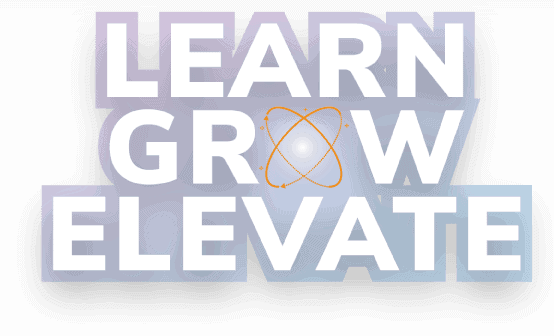
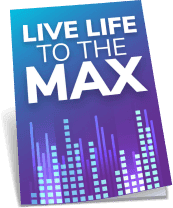






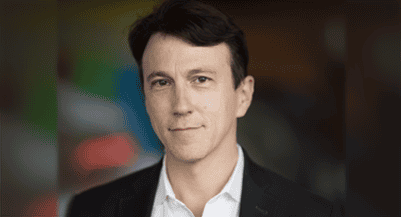
 About Dr. Daniel Kraft
About Dr. Daniel Kraft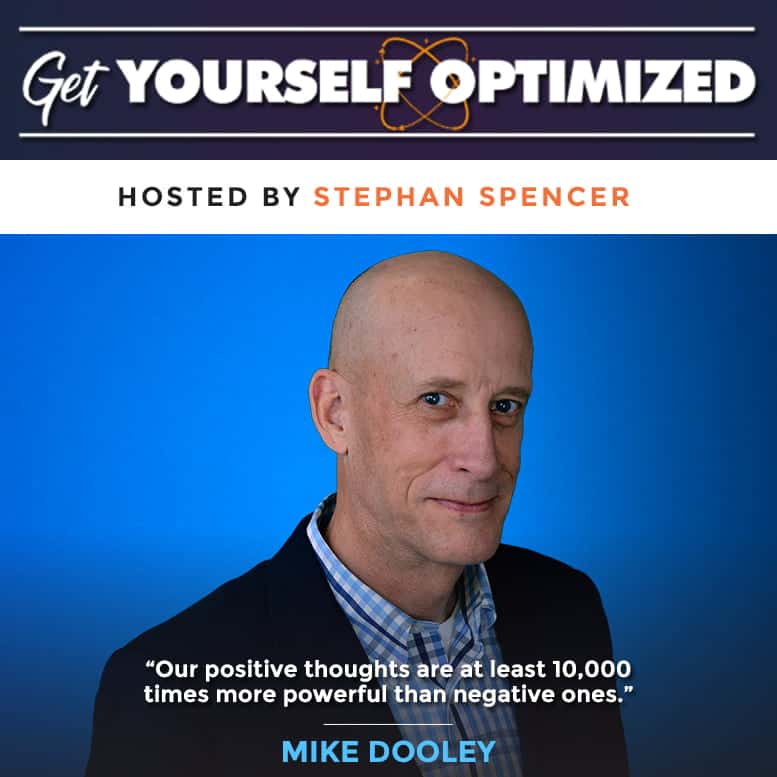
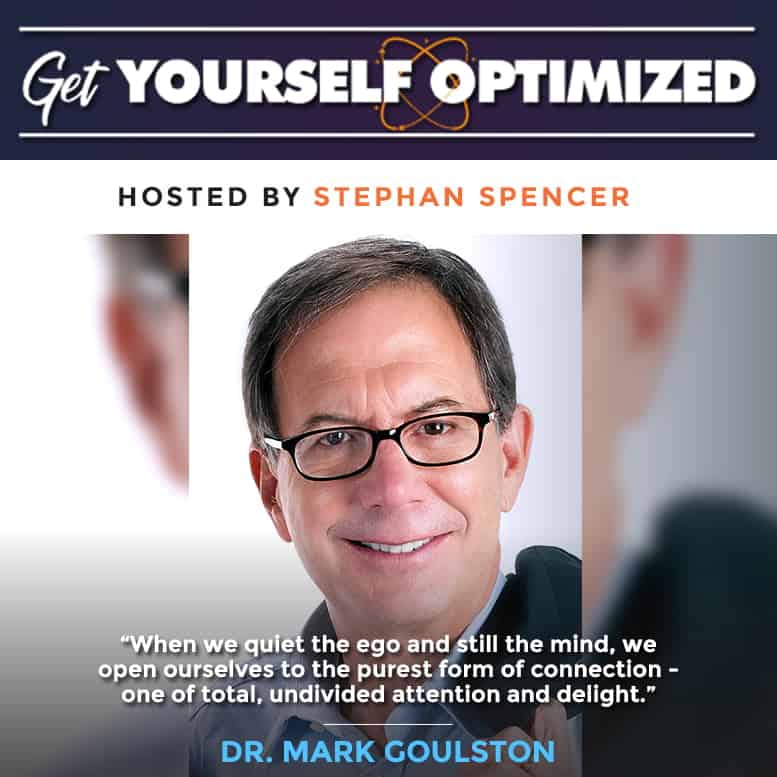
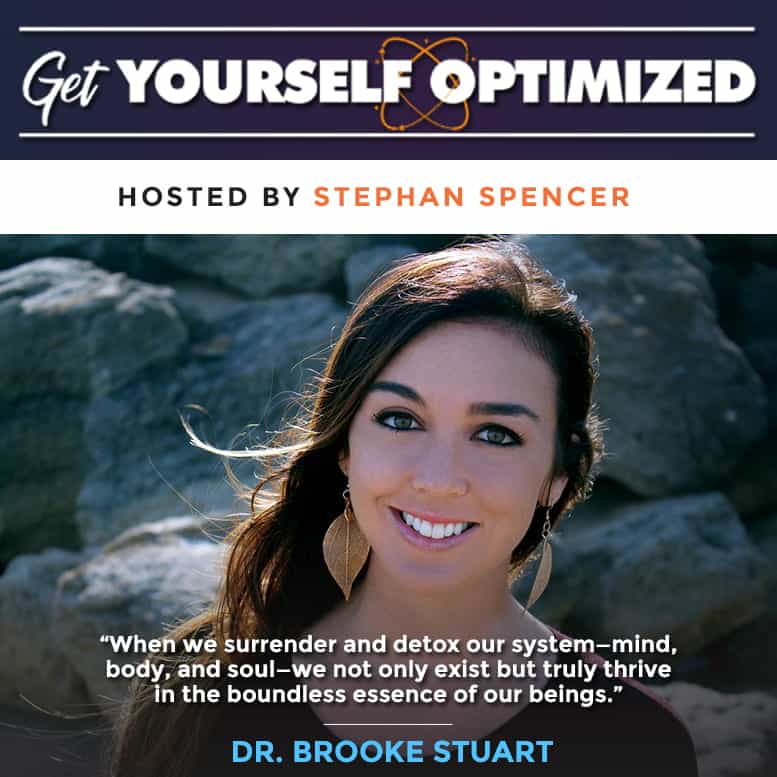
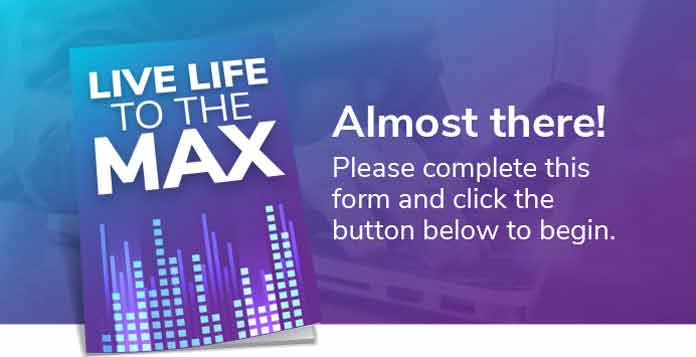
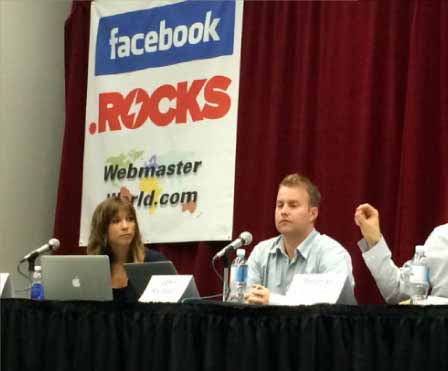
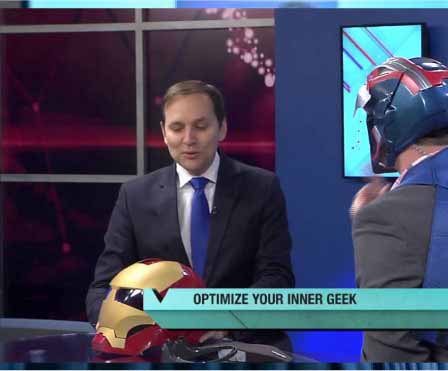
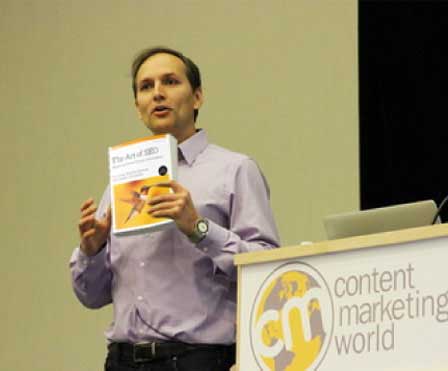
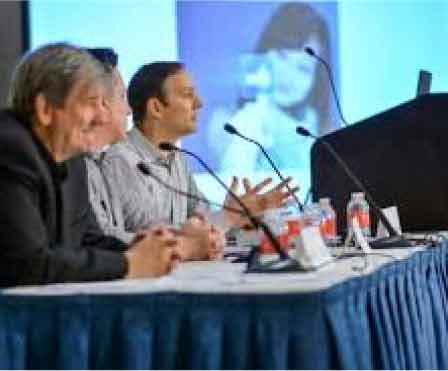
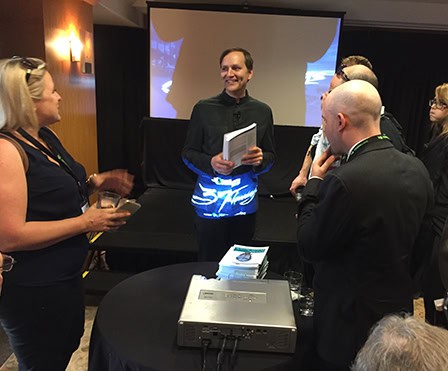
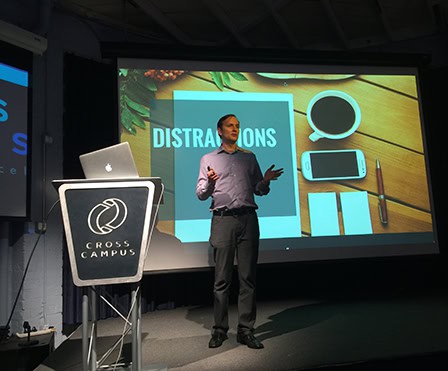
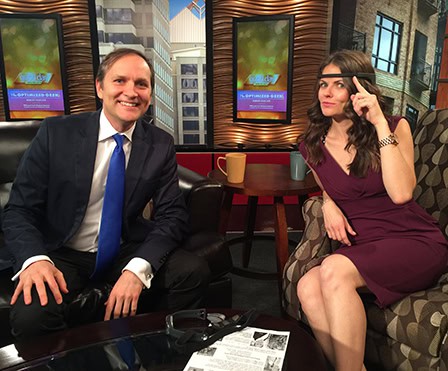

One thought on “Exponential Medicine in a COVID-19 World with Dr. Daniel Kraft”